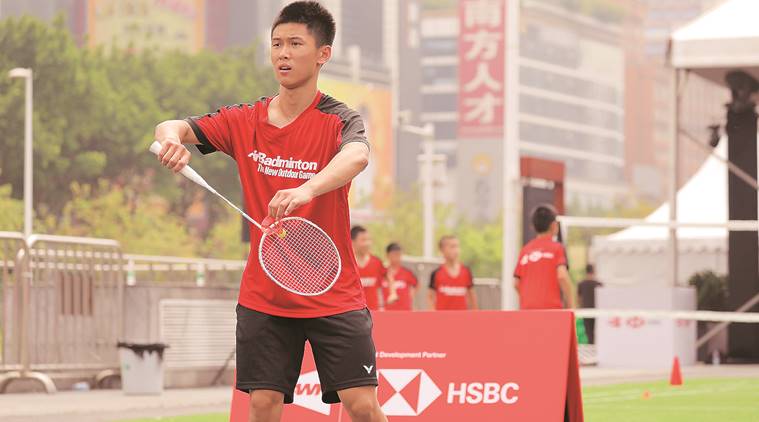
Raghav Rao (26) recalls the ruckus he would make when his opponent in outdoor badminton matches in the bylanes of Juhu Circle hit an underhand shot over an imaginary net in the early 2000s. “How could we tolerate low returns? It was so difficult so we declared it was not allowed,” he remembers.
A Kulkarni Aunty in the neighbourhood would often banish the bickering bunch raising a daily din.
This, and other erstwhile arbitrary rules, have now been codified by badminton’s highest governing body – the Badminton World Federation (BWF) – as the sport’s outdoor version, dubbed AirBadminton, goes mainstream this year. Gully shuttle is aiming to turn high-gentry. India, which has always played the amateur open-air format – at parks and picnics, backyards and building gates, with a net or without – will wake up to the possibility of raquet-shuttlecock dabblers and triflers now being able to play that layman version competitively.
The rules were laid out at the global launch of AirBadminton in Guangzhou, China, earlier this week. Besides a brand-new AirShuttle developed after extensive aerodynamic research, the outdoor format will be played barefoot on an approved surface – sand (to start with) and on courts of smaller dimensions. It will also introduce a new Triples format with one female athlete mandatory in the team.
Having observed shuttle behaviour and how the outdoor sport plays out, the BWF has made one pointed change, though AirBadminton can still be played using traditional racquets on existing outdoor badminton courts. The forecourt has been expended with. “A dead zone either side of the net is needed as the characteristics of the AirShuttle make net shots difficult to control. Therefore, the net area has been taken out, to encourage strokes away from the net and to facilitate rally situations,” the rules say.
Stating that this development is a step towards increasing accessibility, inclusion and participation, BWF President, Poul-Erik Høyer, said in Guangzhou, “Because we now have an ability to play in more different environments, in parks on grass, on beaches in sand, and streets anywhere you want, we can now start playing badminton in a slightly different way, with more enjoyment, more fun and a better level of experience.”
Much like India, amateur participation outdoors is 40 per cent more than those undergoing structured training on expensive indoor wooden courts, globally. Ian Wright, BWF’s Director of Development, insists that outdoors was the preferred place for a bulk of players. “In Pacific islands, Africa and South America, we realised facilities are expensive. But the outdoor participation numbers are always high, and introducing this format will double that,” Wright says. He reckons existing top players might not make the switch, but AirBadminton will find ready takers in recently-retired shuttlers, juniors and recreational players. “A lot of countries want to host the test events which will start in 2020,” he adds. Far outposts like Cook Islands in the south Pacific, Papua New Guinea, and African countries like Lesotho, Ivory Coast, Cameroon and Benin saw the outdoor sport being readily lapped up. “We had great response in El Salvador, one of the world’s poorest countries,” Wright adds.
While India’s two Olympic medals and as many All England titles have come through the traditional indoor pathway, Indians have always grabbed a racquet and tossed a shuttle in the backyard. Incidentally, outdoor badminton is the preferred recreation for Indian Army officers on UN peacekeeping duties in South Sudan, as they were barred from playing contact sport which could result in injuries and the risk of being sent back. They especially catered for nets and shuttles alongside other supplies before flying off. (The ranks preferred cricket.)
Back home, it wasn’t just urban gated colonies that saw this phenomenon. Bijay Singh, a security guard from Faizabad in UP, remembers teenage years spent preserving a feather shuttle for two weeks. “Chalo chidiya khelte hai,” would be the summoning call for children of the neighbourhood, chidiya meaning the feathered shuttlecock.
From the government colonies of Ironside Road in Kolkata where electric wires would be utilised to play badminton on winter nights, to large paper balls which substituted the bird in Keonjhar, Orissa, to a Goregaon housing society in Mumbai, where two decades ago, lanky boys insisted on playing with branded racquets (“Yonex, but not the high-end Carbonex”) and with “American Rules” (points could be scored off opponents’ serve), outdoor badminton is widespread.
The well-entrenched myth was that ‘outdoor’ shuttles made of ostrich feathers invariably ruined the guts of indoor racquets. It remains a present-day corporate team-building exercise on rooftops in Prakash Padukone’s Bangalore, while Gujarat Sports sold affordable racquets and shuttlecocks at Vastrapur in Ahmedabad. Not many bothered with nets or court size, and the only technique seemed to be geared towards hitting high and far. “We didn’t really understand the importance of the wrist and forearm. All power came through the shoulder. Also, as kids, we were more concerned about how pretty our racquets looked. One friend had this fluorescent green and pink one. We were so envious of her,” says Nisha Choudhari.
Badminton Association of India’s secretary Ajai Singhania thinks it a great initiative. “Badminton is mostly played outside. AirBadminton will not only encourage more people to take to the sport but will also generate mighty fun and excitement,” he says.
Central Government housing societies in Mumbai and Kolkata always had a badminton court. “It was also where equal number of girls played and there was no discrimination and no show of physical strength,” recalls Tanushree Mukherjee, who played in Kolkata and Delhi.